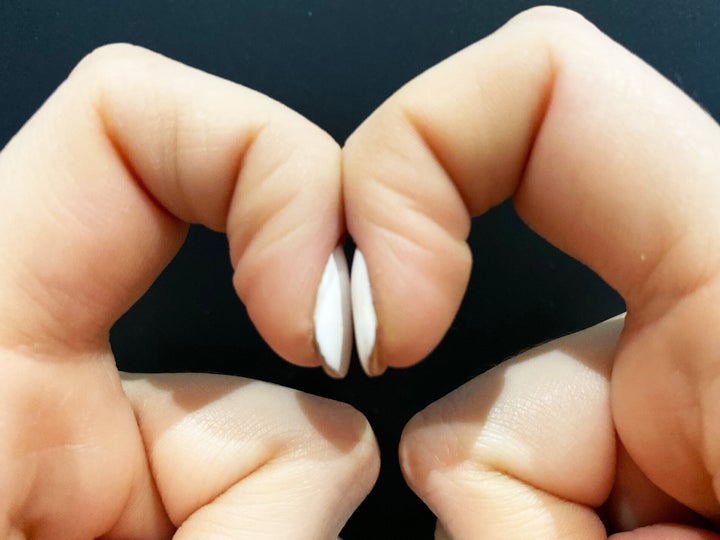An oncology nurse advisor is urging people to be on the lookout for “finger clubbing”, as it could be a sign of lung cancer.
There’s a simple way you can spot it, says Bupa UK’s Emma Norton. It’s called the Schamroth window test and involves putting your nails together to see if there’s a diamond-shaped space between your cuticles. If there isn’t a space, this is a sign of finger clubbing.
“Most people with lung cancer don’t know that their fingers are clubbing unless they know specifically to look out for it,” says Norton, “but the Schamroth window test is a really easy way to check for potential underlying conditions.
“The test is used by medical professionals as a partial method of confirming conditions, but you can also do the test yourself – it only takes a few seconds.”
Beautician Linda Bartram was aware of the signs of clubbing and spotted it in her client, Joan Martindale, 73, from Tutbury in Staffordshire, when she went for a manicure. Bartram told The Sun she’d noticed the 73-year-old’s nails were “bent right over”.
Bartram gently persuaded her client to seek medical advice and doctors later confirmed it was a sign of a tumour and Martindale was treated for lung cancer.
“Going for a manicure saved my life,” Martindale said. “It was incredible she could pick it up from just looking at my nails.”

What is finger clubbing?
Finger (or digital) clubbing is where the ends of your fingers swell up. It happens in stages, according to Cancer Research UK. Firstly, the base of the nail becomes soft and the skin next to the nail bed becomes shiny. Next, the nails begin to curve more than normal when looked at from the side (known as Scarmouth’s sign). In the final stage, the ends of the fingers may get larger and swell.
It’s thought to be caused by fluid collecting in the soft tissues at the ends of the fingers – but it’s not entirely clear why this happens. Detecting early finger clubbing can be the first clue of a serious underlying disorder that, if treated early, may be curable. But it does not automatically mean you have cancer.
How can you do the Schamroth test?
Firstly, put your hands up in front of you and touch the tips of your index fingers. Then, make your nails touch by bending the tops of your fingers (as per the picture). Can you see a small diamond-shaped gap just beneath the nail beds?
“If you can’t see any kind of gap beneath your nail beds, this means that your fingers are clubbed – you should visit your GP as soon as possible for them to establish if the clubbing is being caused by an underlying condition,” says Norton. They might send you for a chest x-ray to check your heart (as clubbing can indicate cardiovascular diseases) and lungs.
It’s worth noting again that finger clubbing doesn’t mean you definitely have lung cancer – there are lots of reasons why your fingers may present this way.
Age can be an important factor too. Dr Richard Roope, clinical lead for cancer for the Royal College of General Practitioners (RCGP), tells HuffPost UK: “Clinical guidelines for GPs do recommend referring patients who are over 40 and present with finger clubbing for an urgent chest X-ray as it can be a sign of both lung cancer and mesothelioma – so this is something that is beneficial for GPs and patients to be aware of.”
It’s worth noting the Schamroth test isn’t supported by the National Institute for Health and Care Excellence (NICE) which informs NHS policy, but is included in the BMJ Best Practice, a support tool for health professionals worldwide. Ultimately it should be used only as a guide to help determine if you should see a GP.
Be vigilant for other signs of lung cancer
Not all people with lung cancer have finger clubbing as a symptom – it affects around 35% of those with non-small cell lung cancer, and only 4% of people with small cell lung cancer. So, says Norton, it’s really important to keep an eye out for other symptoms of the illness too. These include:
:: A cough that doesn’t go away after two or three weeks;
:: Chest infections that keep returning;
:: Coughing up blood;
:: Persistent tiredness or lack of energy;
:: Persistent breathlessness;
:: An ache or pain when breathing or coughing;
:: Loss of appetite;
:: Unexplained weight loss;
:: Difficulty swallowing;
:: Wheezing;
:: Persistent chest or shoulder pain.